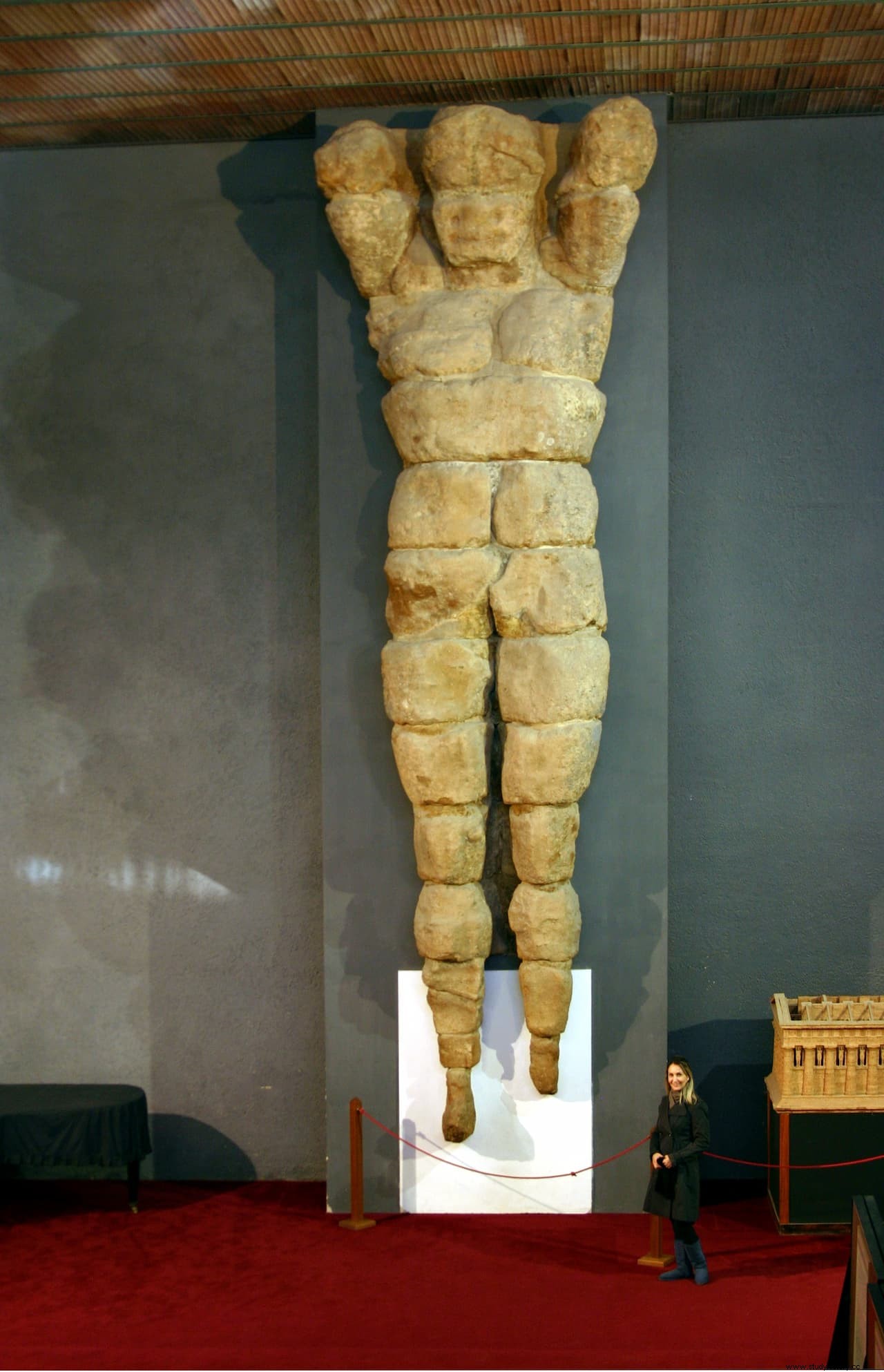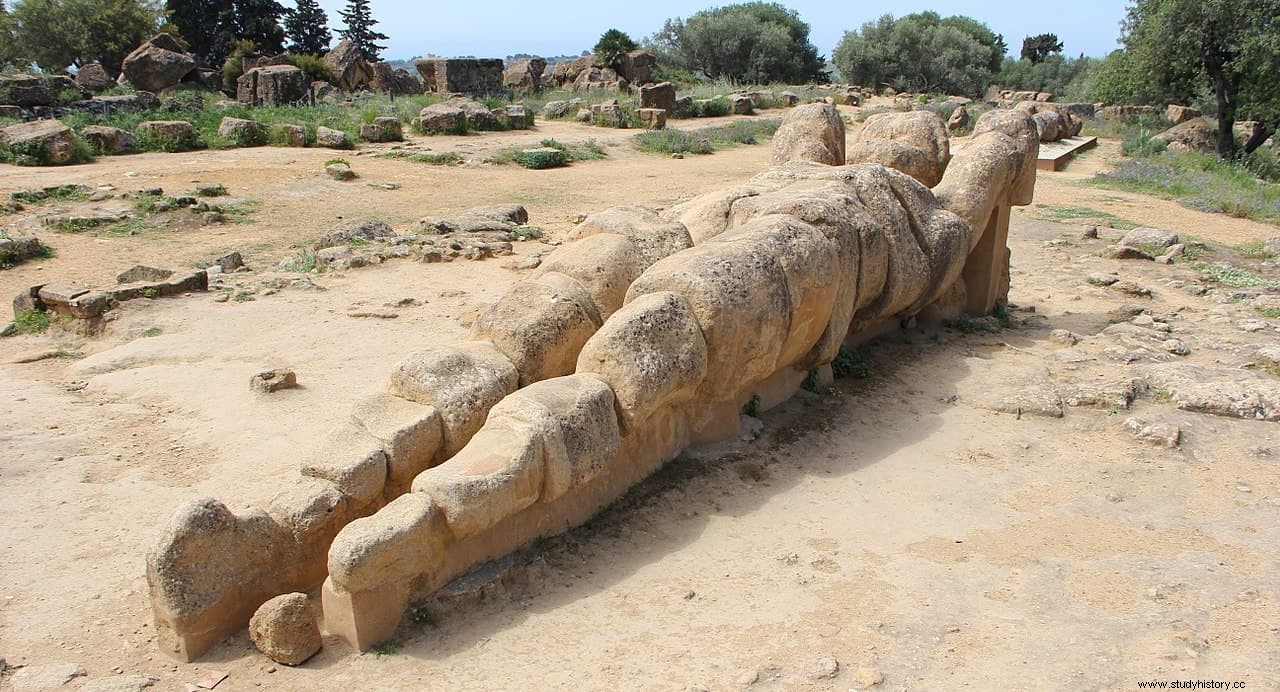Around the year 688 B.C. settlers from the islands of Rhodes and Crete founded the city of Gela on the southern coast of Sicily. It flourished and developed so rapidly that, in less than a century, it was able to found other colonies on its own.
So in the year 581 B.C. a group of Geloi they headed west and just 76 kilometers away from their original polis founded the city of Acragas (or Acragante, which the Romans called Agrigento), on a high plateau on the southern coast of Sicily.

Acragas grew rapidly and became so wealthy that it became one of the most famous cities in Magna Graecia. Its inhabitants, who at the time of greatest splendor could reach the figure of 150,000, had such a high standard of living that their waste and extravagance became proverbial.
According to Claudio Eliano, a Roman rhetoric professor who wrote his Varia Historia early 3rd century AD:

It is therefore not surprising that they undertook the work of building the largest Doric temple ever built. Not only that, but it would also be the strangest and most original stylistically and architecturally, and would have more Atlanteans than any other, up to 38, 7.5 meters high.
The Agrigensians began building the Temple of Olympian Zeus, also known today quite appropriately as the temple of the giants , around 480 B.C. (a century after the founding of the city) in what is now called the Valley of the Temples , where up to 7 hexastyle monumental temples were built.
It is believed that it was founded to commemorate the victory of Acragas and Syracuse over Hamilcar's Carthaginians at the Battle of Himera (480 BC), and Diodorus of Sicily says that the workforce was precisely prisoners captured after the battle. Diodorus also assures that it was not finished precisely due to the Carthaginian conquest of the city in 406 BC. (after more than 70 years of work). Some researchers believe that the works began several years before the aforementioned battle.

In any case, what was built was certainly impressive and original. It was 112.7 meters long by 56.3 wide, and reached a height of 20 meters. It had 7 semi-columns on its façade (the first time they were used in monumental Greek architecture) and 14 on each side (when a traditional Doric temple had 6×13), with the particularity that they were not exempt but joined by a continuous wall. , which helped support the enormous weight of the entablature.

The fact of placing 7 columns on the facade was an archaic feature, which had long ago gone out of style , which prevented placing a central door in the temple. Doors must have been opened at the ends instead, although their exact number is unknown.
Between the columns there were up to 38 colossal Atlanteans 7.5 meters high (a milestone in ancient Greek sculpture), possibly alternating bearded and hairless figures, all of them standing with their backs to the wall and with their hands outstretched. above the head as if supporting the top of the temple.
One of these atlanteans, reconstructed with the pieces found in the site, can be seen in the archaeological museum of Agrigento, and another is found on the ground in front of the ruins of the temple, constituting one of the main attractions for visitors.
The presence of Atlanteans, and in such large numbers, in the temple is an unusual and exceptional feature at the time, and according to some authors confirms the supposed extravagance and exhibitionism of the Acragensians.

The interior of the temple was inspired by Carthaginian architecture, with an immense pillared hall with three naves, the center of which was open to the outside. It is unknown if it was intentionally, because of the difficulty of covering such a large space, or because the roof was never finished. It is also thought that it may have had windows between the columns.
Interestingly, the pediments were completed, with complete sets of marble sculptures. The oriental showed a gigantomachy , while in the western one the fall of Troy was represented.

In front of the eastern facade and about 50 meters away, there was a large altar on pilasters, whose dimensions were 54.50 by 17.50 meters, and which was accessed by a staircase.
The main structure remained standing until the year 797, when the temple was destroyed by an earthquake, and finished collapsing on December 19, 1401. Its remains, which had been used as a quarry since the Middle Ages, were identified in the middle of the from the 16th century by the Dominican friar and historian Tommaso Fazello.
